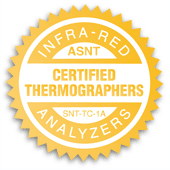917-653-0115
Common EIFS Problems, Part 1- Kick-out FlashingsThere are many installation techniques that should be used when installing an EIFS system. As a Licensed Home Inspector and EDI Certified EIFS Inspector, I spend my days doing Home Inspections and EIFS Inspections throughout Staten Island, Brooklyn, Queens, Manhattan, Bronx, Long Island, and all of the surrounding areas. I am sorry to say, it does not matter where I am, or the size of stature of the job, most installations are pitifully bad. It is important to understand that most, if not all errors are usually easy items to incorporate into the system during the initial installation. Once the system is complete, these repairs now become costly. Some of the easiest precautionary techniques cannot be done without the complete removal of the system. Now, isn't it a pity that it wasn't done right the first time? The best advice I can offer to anyone that is considering have EIFS installed on their home, is to engage the services of an EDI Certified EIIFS Inspector. (EDI is the Exterior Design Institute. EDI is renowned as the leading organization for training and certification of EIFS Inspectors). It is the inspector’s job to ensure that the structure is ready for the installation to begin, to discuss the installation techniques with the installer before the job begins, and to ensure that each step is completed properly, before the next step in the process can begin. This article will focus on “kick-out flashings.” A kick-out flashing is a simple piece of metal flashing that is installed of your roof, prior to the roof cover being installed. It diverts water away from the structure/EIFS, where the roofline meets/dies into the EIFS system. By the way, a kick out flashing should be installed regardless of the type of cladding installed. It is just as important on a building covered with siding, as it is to a building covered with EIFS. The area where the roof meets the structure is very susceptible to water intrusion. The installation of this flashing during the roof installation cost pennies. To add it afterwards involves removal of a portion of the roof cover, and lets not forget the cost of repairing the damaged area itself. On another note, don’t be misled if an EIFS installer tells you that he is a certified installer. Certified by whom, the company selling him the materials? This means nothing. It is frightening, but I must tell you, a major majority of installers are not familiar with proper EIFS installation techniques. It is equally frightening that most of the few that are familiar with the proper techniques do not use them! It is all about competitive pricing. But, that is the subject of another article. What is important is that the system is installed according to manufacturer’s specifications. If an installer tells you he has been doing it this way for twenty years, tell him I said he has been doing it wrong for twenty years. By the way, I see the same common errors on the simplest homes and the fanciest of mansions. |
Comprehensive Home & Building Inspections
917-653-0115
--------------------------------------------------------
Website hosted by Home Inspector Pro - Home Inspector Software - Admin Login


Comments
Post new comment